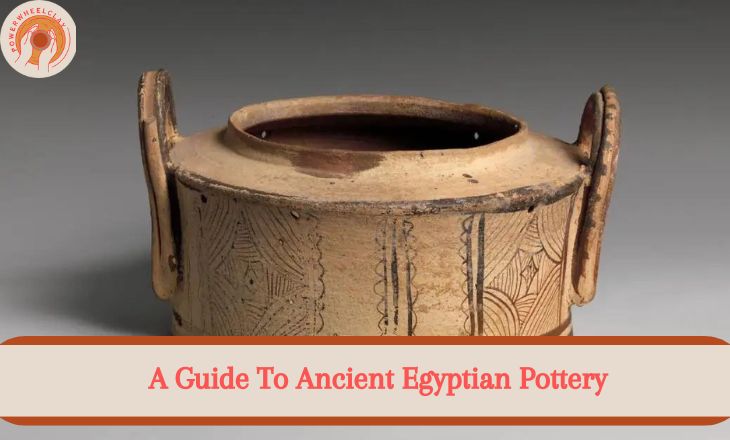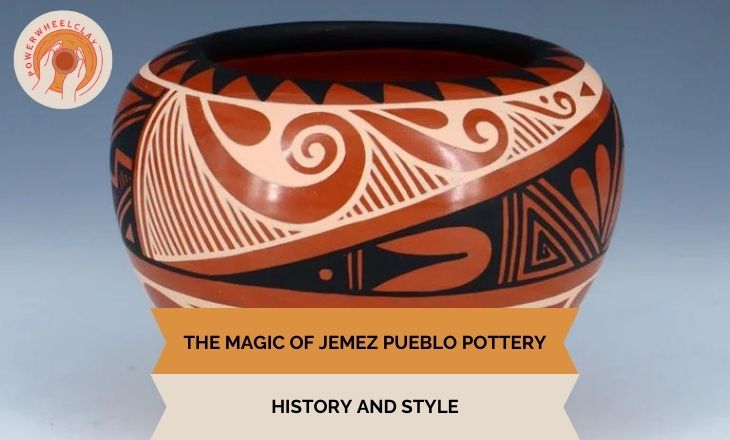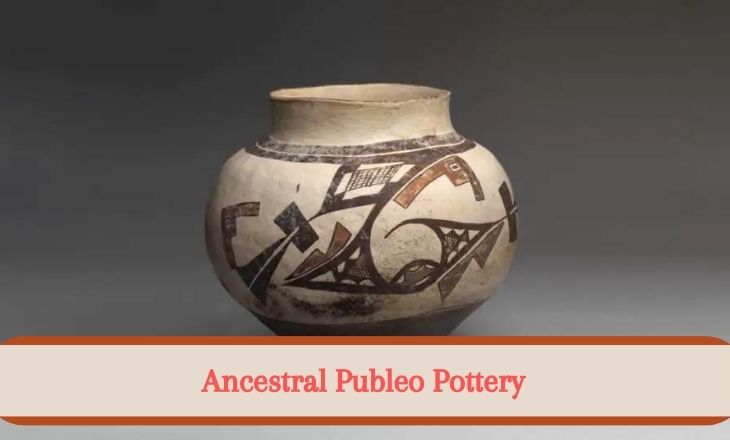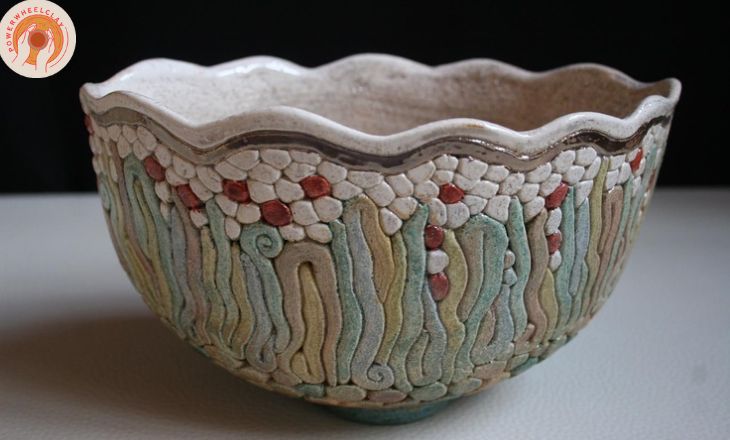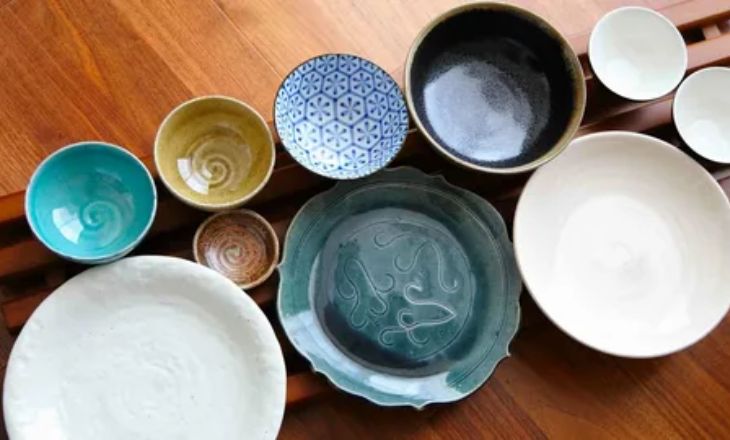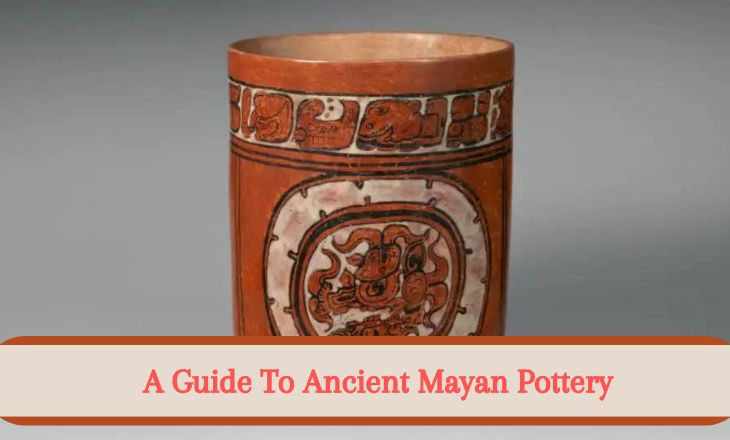A Guide To Ancient Egyptian Pottery
Some people consider the guide of ancient Egyptian pottery to be one of the most important human civilizations in history. A great civilization stands out by its support of the arts. Ancient Egyptian ceramics were highly developed and continue to play an important part in the history of the ceramic medium.
Serving as essential vessels for daily life, religious rituals, and funerary practices, pottery not only fulfilled practical needs but also conveyed symbolic meanings and aesthetic expressions. This guide explores the diverse forms, techniques, and significance of ancient Egyptian pottery, offering insights into the craftsmanship, beliefs, and traditions that shaped this timeless art form.
Ancient Egypt Periods
Egyptian pottery’ historical development and the methods used to make pottery in ancient Egypt, considering the importance of the creations generated by ancient Egyptian potters. The Old Kingdom period (2686-2181 BCE) saw a significant advancement in pottery craftsmanship and creativity. Intricate designs and decorative motifs became prevalent on ceramic vessels reflecting the growing sophistication of Egyptian society.

Abydos King List
The Middle Kingdom period (2055-1650 BCE) marked a shift towards more standardized forms of pottery production. Mass-produced items such as bread molds and beer jars became commonplace during this era indicating a more centralized approach to ceramic manufacturing. One of the most fascinating aspects of these periods is the use of different types of clay in their architecture and art.
With these innovations, individual artisans continued to experiment with new shapes and styles, creating a diverse array of pottery that reflected both tradition and innovation in ancient Egypt’s vibrant cultural landscape. We shall refer to the nine eras of Egyptian pottery history throughout the text. Here is a list that introduces the periods and provides a timeline detailing their order of occurrence.
- Old Kingdom
- First Intermediate Period
- Middle Kingdom
- Second Intermediate Period
- High Priests (HP) of Amund
- Third Intermediate Period
- Late Period
- Macedonian Period
- Ptolemaic Period
When Did Egyptians Start Making Pottery?
Ancient Egypt pottery was a representation of their creative and cultural expressions. The oldest Egyptian ceramics were made by hand with basic methods including burning and coiling shapes. In modern times, artists continue to find inspiration in famous ancient Egyptian pottery painting ideas as they explore new ways to revive this ancient craft while adding their own contemporary twists.
These containers performed a variety of functions, such as preserving food and drink and containing offerings for the afterlife. Egyptian pottery is known for its distinctive red and black hues, which are produced by carefully choosing regional clays and fire techniques. They refined their abilities. Egyptian potters started to produce more elaborate designs with symbolic motifs drawn from everyday objects, religion, and the natural world.
What Is Egyptian Pottery Called?
Egyptian faience is the popular term for Egyptian antique pottery. It is a kind of ceramic material that is typically glazed to give it a glossy appearance. It is made of quartz and alkali. The Great Pottery Throw Down Season 5 brought pottery enthusiasts and fans around the world on a mesmerizing journey through ancient Egyptian art.

The Goddess Isis and her Son Horus
This particular type of ceramic was used extensively in burial customs and religious ceremonies. The Egyptians thought that using porcelain items would provide protection and good fortune in the afterlife. These objects gained additional levels of spiritual value when symbolic iconography such as deities, hieroglyphs, and mythical animals were incorporated.
Clay Used In Egyptian Pottery
The use of clay in Egyptian pottery dates back to ancient times, with the Egyptians crafting intricate and beautiful ceramic pieces for both utilitarian and decorative purposes. The clay used in Egyptian pottery was sourced from various locations across the Nile River.
The significance of clay in Egyptian pottery goes beyond mere materiality; it reflects the deep connection between artistry, tradition, and technology in ancient Egypt. The range of forms and designs from simple everyday vessels to elaborate ceremonial artifacts.
Understanding the role of clay in Egyptian pottery, we gain insights into how ancient Egyptians harnessed natural resources to produce enduring works of art. The mastery of working with diverse clays empowered Egypt’s artisans to innovate within their craft while honoring cultural tradition, a testament to their deep understanding and appreciation for their natural environment.
How Did The Ancient Egyptians Make Pottery?
Ancient Egyptians were skilled artisans in pottery making, and their techniques evolved over thousands of years. Here’s an overview of the pottery-making process as practiced by the ancient Egyptians:
Handbuilding
In pottery-making techniques, the ancient Egyptians were expert craftspeople. They mostly employed the hand-building method, which entailed making pottery by hand rather than on a wheel. The first step in the procedure was collecting clay from riverbanks and kneading it to get rid of any contaminants. Then, the craftsmen would use paddles and anvil stones, along with their hands, to mold the clay.
After the pottery was shaped to the proper shape, it was allowed to dry before being fired at high temperatures in a kiln. The inventive application of mineral pigments for decoration frequently included vivid colors and elaborate patterns. This demonstrated their sophisticated knowledge of materials and procedures to add aesthetic value.
Potter’s Wheel In Ancient Egypt
Ancient Egyptian daily life was great. Influenced by the use of pottery and the potter’s wheel, which shaped everything from religious rituals to food storage. The Egyptians created elaborate and long-lasting vessels that were vital to the survival of their civilization because they mastered sophisticated clay working skills.
In ancient Egypt, the pottery wheel was not just a mere tool for shaping clay; it was a symbol of creativity, craftsmanship, and even spirituality. The potters who worked on the great throw-down cast were considered masters of their craft, with each delicate flick of their fingers transforming raw materials into beautiful works of art.
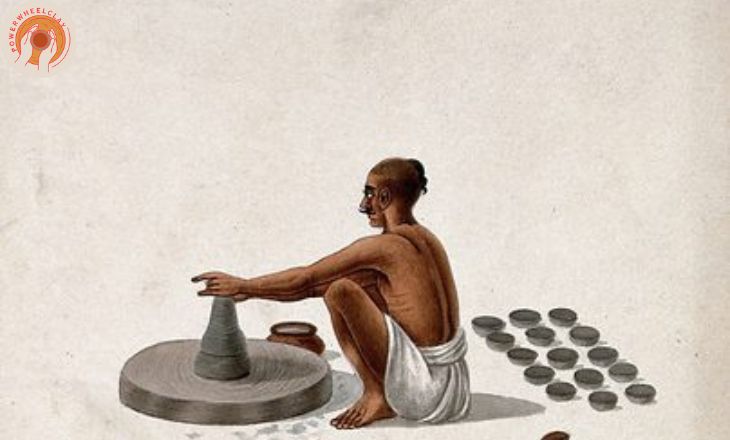
Hand-Operated Potter’s Wheel
The invention of the potter’s wheel transformed the manufacturing process and allowed artisans to produce more accurate and reliable work. A novel viewpoint on the potter’s wheel in ancient Egypt pertains to its function in conserving historical and cultural details. Numerous pieces of pottery have elaborate inscriptions and decorations that shed light on the customs, beliefs, and everyday activities of the ancient Egyptians.
Firing Ancient Pottery
In creating the pottery process, the firing ancient Egyptians were experts in their work. They mostly employed the handbuilding method which entailed making pottery by hand rather than on a wheel.
The first step in the procedure was collecting clay from riverbanks and kneading it to get rid of any contaminants. Then, the craftsmen would use paddles and anvil stones, along with their hands, to mold the clay. Firing pottery has been an integral part of human civilization, allowing us to create functional and decorative objects that withstand the test of time. One particularly intriguing method of firing is known as Greenware ceramics.

Firing Ancient Pottery
After the pottery was shaped to the proper shape it was allowed to dry before being fired at high temperatures in a kiln. The inventive application of mineral pigments for decoration frequently including vivid colors and elaborate patterns, was what distinguished Egyptian pottery. This demonstrated their sophisticated knowledge of materials and procedures in addition to adding aesthetic value. The resultant ceramic was utilized.
What Did Ancient Egyptian Potters Make?
Ancient Egyptian potters produced a wide range of pottery items for various purposes, reflecting the diverse needs and activities of ancient Egyptian society.
Functional Egyptian Pottery
Incomparable in their expertise, the potters of ancient Egypt created a wide range of useful ceramics for a variety of daily uses. Their works, which ranged from simple cooking pots to elaborate storage jars, were representative of the vital function that pottery played in ancient Egyptian culture. These talented artisans also demonstrated a profound awareness of form and function by specializing in the creation of elaborate containers for religious and ceremonial purposes.

New Kingdom jug
Pottery was used for purposes more than just utilitarian; it had deep cultural importance. The Egyptians’ appreciation of creativity and beauty in everyday life was evidenced by ornamental vessels decorated with symbolic patterns.

Jar From The Tomb of Sennedjem
Egyptian pottery’s adaptability and longevity guaranteed its continued presence as a significant component of material culture, offering insightful information about the habits and customs associated with this.
Religious Egyptian Pottery
Ancient Egyptian religious ceramics are important to understanding Egyptian history and culture. These objects’ elaborate paintings and symbolism provide insight into the spiritual practices and beliefs of the era. The jars had great religious importance and were frequently employed in rituals and burials dedicated to the gods.

Khnum Statue
Religious Egyptian pottery is characterized by a distinctive fusion of vivid colors and symbolic artwork that conveys a profound sense of immortality and the afterlife. The most notable aspect of these artifacts is probably the representations of Egyptian mythology they contain in the form of gods and hieroglyphics, which provide insight into how people understood their relationship to the divine.
Styles: Pottery In Ancient Egypt
Pottery in ancient Egypt encompassed various styles and forms throughout its long history. The styles of pottery evolved over time, reflecting changes in technology, artistic preferences, and cultural influences. Here are some of the prominent styles of pottery seen in ancient Egypt:
Enameled Pottery
Being solely decorative, enameled pottery in ancient Egypt showed the highly developed artistic and arts and crafts abilities of the Egyptian people. Their careful attention to detail, accuracy, and creative expression was shown by the elaborate inlay decorative work on painted ceramics.

Lotiform Cup
With intricate designs and seem The painted pottery of ancient Egypt remains a source of inspiration for modern craftspeople, who infuse their own originality and vision into this age-old skill. They give this age-old art form a fresh life while honoring its rich cultural legacy as they play with various hues, patterns, and application methods. Boil potters were able to produce magnificent items that perfectly captured Egyptian culture and values thanks to this style.
Plated pottery was defined by its vivid color scheme and capacity to produce elaborate artistic images on the surface. This made it possible to communicate stories using images and produced an enduring medium for keeping historical accounts. The Egyptians’ early use of this technique demonstrates their love of artistic inventiveness and their desire to transform everyday supplies into works.
Egyptian Relief Carving
Egyptian relief carvings on ceramics shed light on the morals, ideologies, and aesthetic preferences of this historic society. A glimpse into the rich fabric of Egyptian culture is provided by each finely carved detail that reflects the Egyptians’ passion for mythology, storytelling, and artistry. This ageless art form’s capacity for powerful story and timeless beauty continues to attract modern audiences.

Egyptian Relief Carving
We are able to recognize how each incision made into the material demonstrates an artist’s attention to detail and commitment to their craft by looking at these antiquated artifacts from new angles. Every line that was cut out had meaning, whether it was a representation of religious rituals or a story from everyday life. It transformed superficial observations into meaningful statements of cultural identity.
Egypt Faience
Faience is a fascinating aspect of ancient Egyptian culture, encompassing pottery and jewelry. Faience also held deep symbolic significance in Egyptian society. The use of bright colors like turquoise and cobalt blue emphasized divine connections and represented rebirth and fertility.
In the world of Egyptian faience, we uncover not only exquisite craftsmanship but also a profound cultural tapestry that speaks volumes about the values and beliefs held by this ancient civilization. Decorative items or vessels for everyday use, these intricate pieces offer glimpses into an era where creativity merged with spirituality to produce enduring works of art laden with symbolism.
Conclusion
The craftsmanship and symbolism demonstrated in Egyptian pottery reflect a deep connection to spirituality, daily life, and burial practices. From intricate designs to depictions of deities, each piece provides a window into the beliefs and values of this remarkable civilization. We gain insight into their advanced techniques, innovative designs, and social structures.
Pottery served not only as functional items but also as vessels for artistic expression and cultural significance. Each artifact holds clues about trade routes, technological advancements, and even social hierarchies within ancient Egypt. Ancient Egyptian culture may have been the most influential human civilization ever. Egyptian pottery is a big part of what lives on and tells the Egyptian story.
FAQs
What Was The Purpose of Egyptian Pottery?
Egyptian pottery served utilitarian functions such as storage, cooking, and transportation of goods, while also fulfilling ritualistic and symbolic roles in religious ceremonies, funerary practices, and daily life. It provided essential vessels for both practical needs and cultural expressions in ancient Egyptian society.
What Clay Did Egyptians Use?
The Egyptians primarily used Nile silt clay, which was abundant along the banks of the Nile River. This clay was easily accessible and suitable for pottery making, contributing to the flourishing pottery industry in ancient Egypt.
What Are Some Interesting Facts About Egyptian Pottery?
Egyptian pottery spanned over three millennia, showcasing innovative techniques like wheel-thrown production and intricate decorative designs reflecting religious beliefs. It served utilitarian, ceremonial, and funerary purposes, symbolizing the cultural richness and artistic prowess of ancient Egypt.
How To Make Ancient Egyptian Pottery?
To make ancient Egyptian pottery, start with Nile silt clay, which provides a rich, reddish-brown color due to its iron content. Shape the pottery by hand using coiling or slab techniques, as pottery wheels were rare.
Decorate with geometric patterns, symbols, or images of deities by carving or incising. Fire the pottery in an open pit or simple kiln at temperatures between 800-900°C (1470-1650°F) to harden and finish the piece.
What Is The Oldest Pottery In Egypt?
The oldest pottery in Egypt dates back to the Predynastic Period (5000-3000 B.C.), specifically the Naqada I and II phases. During this time, distinctive black-topped redware jars were hand-formed and polished by burnishing with a smooth pebble before firing. These pots are some of the earliest examples of Egyptian craftsmanship.
